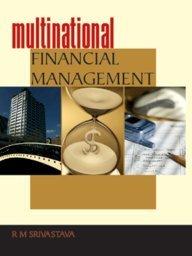Question
12. Assuming that the CAPM holds, find the expected return of stock X for the period 2001-2004. A. 12.45% B. 10.96% C. 16.80% D. 14.20%



12. Assuming that the CAPM holds, find the expected return of stock X for the period 2001-2004.
A. 12.45%
B. 10.96%
C. 16.80%
D. 14.20%
13. Assuming that the CAPM holds, find the expected return of stock Y for the period 2001-2004.
A. 13.65%
B. 11.22%
C. 9.96%
D. 8.02%
14. Assuming that the CAPM holds, find the expected return of stock Z for the period 2001-2004.
A. 10.94%
B. 13.27%
C. 11.33%
D. 15.42%
15. Assuming that the CAPM holds, find the expected return of a portfolio that invests 20% on stock X, 30% on Y, and 50% on Z.
A. 9.28%
B. 11.01%
C. 12.46%
D. 8.98%
16. Determine whether a portfolio that invests 20% on stock X, 30% on Y, and 50% on Z is overvalued or undervalued? (Hint: find the difference between the portfolio return calculated using the given portfolio weights and the portfolio expected return calculated using CAPM.)
A. overvalued by 8.21%
B. overvalued by 6.56%
C. undervalued by 5.32%
D. undervalued by 4.87%
17. Assuming that the CAPM holds, find the expected return of a portfolio that invests 50% on stock X, 30% on Y, and 20% on Z.
A. 12.74%
B. 13.99%
C. 10.65%
D. 14.59%
18. Determine whether a portfolio that invests 50% on stock X, 30% on Y, and 20% on Z is overvalued or undervalued? (Hint: find the difference between the portfolio return calculated using the given portfolio weights and the portfolio expected return calculated using CAPM.)
A. undervalued by 4.87%
B. overvalued by 8.21%
C. undervalued by 5.32%
D. overvalued by 8.12%
Questions 12 to 18 below use information from Questions 7 to 11,and are also based on the Capital Asset Pricing Model (CAPM), which is closely related to the market model we covered in class. Specifically, given below the market model, StockExcessReturnrirf=i+Systematiccomponenti(rmrf)+Firm-specificComponenti Take expectation on both sides, you get the equation below since the intercept and beta are constants, E(RiRf)=i+i[E(RM)rf]+E(i) Note that we assumed the firm-specific variance is zero in class: E(i)=0. In addition, CAPM assumes that the model correctly prices all assets so that alpha is equal to zero if CAPM holds (e.g., in the model). Plug in E(i)=0 and i=0, we get the final equation for CAPM below: E(Ri)=Rf+i[E(RM)rf] where E(Ri) is the expected return on asset i,Rf is the risk-free rate, i is the same beta from the market model, and E(RM) is the expected market return. date200120022003StockX0.100.150.35StockY0.250.150.10StockZ0.350.250.20Market0.070.050.20Risk-Free0.050.050.05 20040.150.400.100.100.05Step by Step Solution
There are 3 Steps involved in it
Step: 1

Get Instant Access to Expert-Tailored Solutions
See step-by-step solutions with expert insights and AI powered tools for academic success
Step: 2

Step: 3

Ace Your Homework with AI
Get the answers you need in no time with our AI-driven, step-by-step assistance
Get Started


